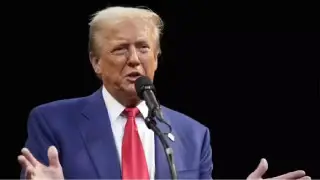
Under the Initiative on Critical and Emerging Technologies (iCET), India and the United States are discussing prospective collaboration on the development of jet engines, long-range artillery, and infantry vehicles. These negotiations have been continuing since earlier this year, and certain high-tech initiatives are scheduled to be disclosed during Prime Minister Narendra Modi’s impending visit to the United States next month. Prior to the visit, INDUS-X, an iCET effort aiming at fostering relationships between the defence innovation ecosystems of both countries, will be launched in Washington.
The 17th meeting of the India-US Defence Policy Group (DPG) was recently held and was headed by India’s Defence Secretary Giridhar Aramane and Dr Colin Kahl, Under Secretary of Defence for Policy. The advancements that have been made in promoting defence industrial collaboration and implementing the India-US Major Defence Partnership were reviewed during the conference. Military-to-military cooperation, the execution of foundational defence agreements, joint exercises, and cooperative actions in the Indian Ocean Region were all addressed. The forum also placed a strong emphasis on increasing defence industry cooperation, including technical partnerships, long-term research and development, and supply chain security enhancements. Furthermore, discussions focused on fostering co-development and co-production in India, with a particular emphasis on possible areas and projects for collaboration between Indian and American defence firms.
Defence Secretary Aramane also met with Deputy Secretary of Defence Dr Kathleen Hicks, and the Pentagon emphasised the imminent launch of INDUS-X as an important chance to promote relationships between both countries’ defence innovation ecosystems. INDUS-X is a key effort within iCET that will focus on advancing high-tech collaboration.

The partnership on jet engines, as well as other collaborative production and co-development techniques, were considered during the DPG meeting. General Electric (GE) is considering licencing the manufacture of its GE-414 engines in India, which has already been chosen to power India’s Light Combat Aircraft (LCA)-MK2. Another proposal involves joint production of a jet engine for India’s future indigenous jets, for which GE is competing with Safran of France and Rolls Royce of the UK. If the agreement is completed, India will become the sixth country capable of producing plane jet engines.

This agreement is significant not only for the progress of India’s aviation industry but also for sending a message to China about the strengthening connection between India and the United States. Furthermore, the agreement contains a significant transfer of technology, which, if publicised, would be a first and is considered important to the success of the next visit. Deputy Secretary Hicks stated that the United States supports India’s defence modernisation goals, including expanded US investments in Indian domestic production. The discussions also emphasised the unique prospects for developing ties between the United States and India’s defence industries through the co-production of jet engines, long-range artillery, and infantry vehicles under iCET.
The DPG is the highest-level formal body between India’s Ministry of Defence and the United States Department of Defence, assessing and guiding all elements of bilateral defence collaboration with a policy focus. Earlier efforts to co-develop a jet engine under the Defence Technology and Trade Initiative (DTTI) had to be abandoned by domestic legislation in the United States, resulting in the dissolution of the Joint Working Group a few years ago.













Copyright © 2025 Top Indian News
